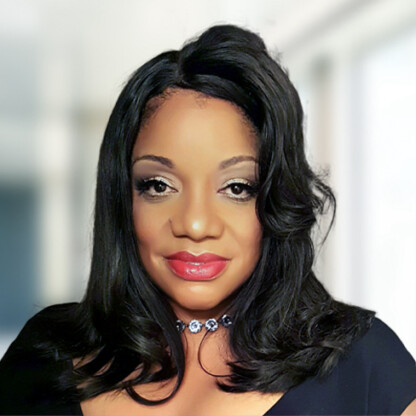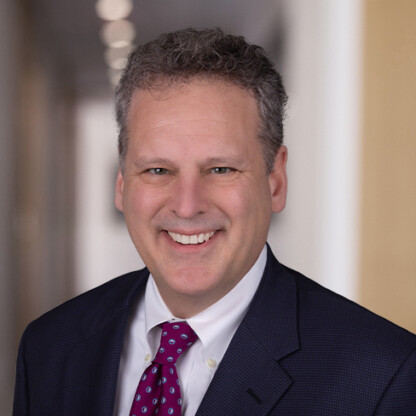What Now for Patent Eligibility?: In Bilski v. Kappos, the Supreme Court Rejects Machine-or-Transformation as the Sole Test for Patent Eligibility of Processes
On June 28, 2010, the U.S. Supreme Court issued its long-awaited opinion in Bilski v. Kappos (https://www.supremecourt.gov/opinions/09pdf/08-964.pdf). A unanimous court affirmed the judgment of the Court of Appeals for the Federal Circuit and found that Bilski’s claims were “abstract ideas” and thus not directed toward patentable subject matter. In re Bilski, 545 F.3d 943 (Fed. Cir. 2008) (en banc) (see previous discussion at https://www.foley.com/publications/pub_detail.aspx?pubid=6575). More significantly, however, a majority of the Court affirmed a broad view of the scope of patent eligible subject matter that is consistent with the ordinary language of 35 U.S.C. §§ 100-101. In particular, the Court unanimously held that the “machine-or-transformation” test was not the sole test for determining whether a process was directed to patentable subject matter. The Court, however, divided 5–4, in holding that business methods may be patented. The full implications of the holding await further litigation and clarifying interpretation from the Federal Circuit, yet this decision provides important guidance for determining whether claims are patent eligible.1
Bilski and his co-inventors sought a patent that claimed a process for hedging risk in commodity markets. The U.S. Patent & Trademark Office (“USPTO”) rejected the claims as not being directed toward patentable subject matter. On appeal, the Federal Circuit held that processes surely were patentable if they were (1) tied to a particular machine of apparatus, or (2) transformed a particular article into a different state or thing. In re Bilski, 545 F.3d at 954. Because Bilski’s claims did not satisfy either prong of this test, the Federal Circuit affirmed the USPTO’s decision. The Federal Circuit’s test has come to be known as the machine-or-transformation test. Bilski sought and obtained Supreme Court review.
Before the Supreme Court, the government advanced three arguments in support of the Federal Circuit’s holding: (1) the claimed process did not comply with the machine-or-transformation test, (2) the claimed process was a method of conducting business and was, therefore, unpatentable, and (3) the claimed process was merely an abstract idea.
The Supreme Court’s judgment in the case—that Bilski’s claims were not directed to patentable subject matter—was widely anticipated based upon the Court’s previous recent opinions regarding patent law and the questions asked at oral argument. This judgment was supported by all nine members of the court. The case, however, had attracted considerable attention because it might result in an opinion that would have much broader implications for business method and other process patents.
The Court’s analysis started from the statutory language, which states that there are four categories of patentable subject matter: (1) processes, (2) manufactures, (3) machines, and (4) compositions of matter. 35 U.S.C. § 101. Because the statute provides a circular definition of the term “process,”2 determining whether particular process is patent eligible has become quite difficult. The decision in this case is the Supreme Court’s attempt to provide guidance for determining whether particular processes are patent eligible.
The Court first addressed the argument that the Federal Circuit’s machine-or-transformation test was the only test that could be used to determine patent eligibility. While the Federal Circuit, after a careful reading of Supreme Court precedent, had only stated that a process was surely patent eligible if it complied with this test, In re Bilski, 545 F.3d at 954, many—including the Supreme Court, Bilski, slip op. at 7—interpreted the Federal Circuit’s opinion as establishing the machine-or-transformation test as the sole test for patent eligibility. The Supreme Court rejected a narrow reading of its precedent and held that “[t]he machine-or-transformation test is not the sole test for deciding whether an invention is a patent eligible ‘process.’” Id. at 8. Justice Kennedy then went on to explain that the “[s]ection 101 is a dynamic provision designed to encompass new and unforeseen inventions,” id. (internal quotations omitted), and that as new technologies evolve, the statute allows courts to develop additional tests to determine patent eligibility, id. at 9. This portion of the opinion—which endorses a view of the law as living and evolving—was not joined by Justice Scalia, and thus is not binding.
The Court next addressed the argument that Bilski’s claims were unpatentable because they were directed to a business method, and business methods are categorically unpatentable. The Court rejected this argument in view of 35 U.S.C. § 273, which creates a defense to alleged infringement of a business method claim. The clear implication of this provision is that claims directed to business methods can be patentable subject matter. Writing for four justices—Justice Scalia again refused to join this part of the opinion—Justice Kennedy emphasized that the Court’s decisions regarding the unpatentability of abstract ideas provided useful limiting principles for setting boundaries on the scope of patentable business methods. He also issued a reminder that patents directed toward patent eligible subject matter under § 101 must still comply with the requirements of 35 U.S.C. §§ 102, 103, and 112.
The Court ultimately decided that Bilski’s claims were unpatentable because they were directed to “abstract ideas.” In reaching this decision, the Court applied its decisions in Benson, Flook, and Diehr. See Bilski, slip op. at 13-16. The Court examined the language in Claims 1 and 4 of Bilski’s application and determined that these claims described the concept of hedging risk through a series of transactions and a mathematical formula that embodied this process. Id. at 15. Because allowing Bilski “to patent risk hedging would preempt use of this approach in all fields, and would effectively grant a monopoly over an abstract idea,” the claims were unpatentable. Id. Likewise, Bilski’s remaining claims were unpatentable as abstract ideas as they merely were “broad examples of how hedging can be used in commodities and energy markets.” Id.
While the Court declined to put forth its own test, it agreed that its “precedents establish that the machine-or-transformation test is a useful and important clue, an investigative tool, for determining whether some claimed inventions are processes under § 101.” Thus, it remains to be seen how this test will be used as a guidepost by lower courts in conjunction with the direction provided by the Court’s precedents in Benson, Flook, and Diehr.
Justice Stevens’ Concurrence (Joined by Justices Breyer, Ginsburg, and Sotomayor)
Four Justices—Stevens, Breyer, Ginsburg, and Sotomayor—would have broadly held that business method patents were unpatentable. In Justice Stevens’ concurrence, these Justices agreed with the majority opinion’s holding rejecting the machine-or-transformation test as the sole test. However, they would have found Bilski’s claims unpatentable on the basis that the claims described a general method of engaging in business transactions, and thus such a method is unpatentable under § 101.
According to Stevens’ concurrence, the text of § 101 does not on its face convey the scope of patentable processes, making it necessary to look to the history of U.S. patent law for guidance. Based on a detailed historical analysis, Stevens concluded that neither the Patent Clause, nor early patent law or the current § 101 supported the patentability of business methods, and therefore “a business method is not a process” under § 101. Rejecting the majority opinion’s position that Congress confirmed the patentability of business methods by enacting § 273, Stevens opined that Congress was only attempting to reduce the potential fallout from the Federal Circuit’s decisions holding that business methods were patentable, by providing a defense to liability for businesses innocently using such methods. Since Congress did not clearly state that it was amending and expanding § 101 to include business methods, and the record does not clearly show that Congress even understood § 101 to cover business methods, the Court should not presume that Congress intended business methods to be patent eligible under § 101.
Allowing business method patents may also press on the limits of the constitutional standard under which Congress may issue patents “[t]o promote the Progress of … useful Arts,” Art. I, § 8, cl. 8. Stevens expressed “serious doubts” about whether business method patents are necessary to encourage business innovation, which in Stevens’ view would happen and has happened anyway. Furthermore, in Stevens’ view, such patents might even impede business by prohibiting legitimate competition and innovation and by turning many business decisions into potential patent violations.
Justice Breyer’s Concurrence (Joined by Justice Scalia)
Justice Breyer also wrote a separate concurrence, in which Justice Scalia joined, to highlight the points upon which, in Justice Breyer’s view, all the members of the Court substantially agree, in addition to the unanimous holding that Bilski’s claims are unpatentable. Justice Breyer summarized these points as follows:
First, although the text of § 101 is broad, it is not without limit. In particular, “[p]henomena of nature, though just discovered, mental processes, and abstract intellectual concepts are not patentable” under § 101.
Second, in a series of cases that extend back over a century, the Court has stated that “[t]ransformation and reduction of an article to a different state or thing is the clue to the patentability of a process claim that does not include particular machines.”
Third, while the machine-or-transformation test has always been a “useful and important clue,” it has never been the “sole test” for determining patentability. Rather, according to Breyer, the Court has emphasized that a process claim meets the requirements of § 101 when the claim, considered as a whole, “is performing a function which the patent laws were designed to protect[.]” This might include, for example, transforming or reducing an article to a different state or thing. Therefore, the machine-or-transformation test is an important example of how a court can determine patentability under § 101, but the Federal Circuit erred by treating it as the exclusive test.
Fourth, although the machine-or-transformation test is not the only test for patentability, according to Breyer, this by no means indicates that anything which produces a “useful, concrete, and tangible result” is patentable. Breyer notes that the Supreme Court has never made such a statement and, if taken literally, such a statement would contradict cases in which the Court has held the contrary.
Conclusion
In Bilski, the Supreme Court created more questions than it answered.
While the Court unanimously held that Bilski’s particular claims were not patent eligible, the majority opinion held that the machine-or-transformation test was not the sole test that could be used to determine if a particular claim is directed to a patent eligible process. The Court, however, did not set forth any additional tests that might be used. It remains to be seen whether and how the USPTO, district courts, and the Federal Circuit will use this freedom to devise additional, possibly more flexible tests.
The Court’s majority also held that business methods were not categorically unpatentable, but did not provide a great deal of guidance as to how to determine whether claims to a particular business method were, in fact, patent eligible.
The Court’s majority held that Bilski’s claims were unpatentable because they were addressed to abstract ideas. In reaching this conclusion, the Court relied upon, but did not clarify, three previous opinions that were responsible for creating much of the confusion in this area. It remains to be seen whether these cases will now be interpreted in a consistent manner.
Finally, although the Court’s decision suggests that many claims to diagnostic methods and other processes may be patent eligible, it remains to be seen if the broadest claims of this type will be found to be directed to abstract ideas, and thus unpatentable.
For these reasons, it will be necessary to continue to monitor future developments regarding the scope of patent eligible subject matter.
[1] Justice Kennedy wrote the majority opinion for a split court. His opinion was joined in full by Chief Justice Roberts and Justices Thomas and Alito, and in part by Justice Scalia. Justice Stevens wrote an opinion concurring in the judgment, which was joined by Justices Ginsberg, Breyer, and Sotomayor. Justice Breyer also wrote a concurrence, which was joined in part by Justice Scalia. The concurrences are discussed at the end of this article.
[2] The statute defines a “process” as “process, art or method, and includes a new use of a known process, machine, manufacture, composition of matter, or material.” 35 U.S.C. § 100(b).
Legal News Alert is part of our ongoing commitment to providing up-to-the-minute information about pressing concerns or industry issues affecting our clients and colleagues. If you have any questions about this alert or would like to discuss the topic further, please contact your Foley attorney or the following:
|
Stephen B. Maebius |
Mary M. Calkins |



